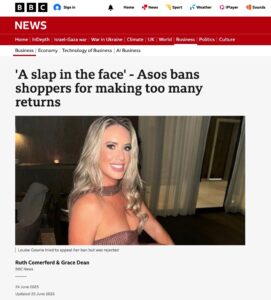What if your 4× ROAS campaign was actually a money-loser? It’s not a far-fetched scenario. E-commerce businesses have reported 8× ROAS yet still ran out of cash, thanks to hefty post-purchase expenses quietly devouring profits. In fact, hidden e-commerce costs act like an “e-commerce tax” of roughly 8–15% on sales, turning healthy revenue figures into profit nightmares.
In this deep dive, we’ll expose every post-sale “profit vampire” from sneaky shipping surcharges to the actual cost of “free” returns. More importantly, you’ll learn how to clamp down on them with a POAS (Profit On Ad Spend) lens instead of the traditional ROAS view. By the end, you’ll know exactly how to audit your post-sale expenses, calculate your true profit per order, and take concrete steps to plug those profit leaks.
If you’re having trouble driving profit from your ad campaigns, we use a profit-first PPC Agency model. – ROAS looks good. Profit feels good.
The Post-Sale Cost Breakdown
After you win the sale, the real cost battle begins. Fixating on top-line revenue and ROAS leaves gaping blind spots where costs lurk. Let’s break down the major categories of hidden post-purchase expenses.
Shipping & Fulfilment Fees
- Fuel & Distance Surcharges
Carriers charge fuel surcharges and zone-based fees for distant deliveries. Once surcharges apply, e-commerce sellers can see shipping costs spike by 25%. - Dimensional Weight & Last-Mile Premiums
Bulky but light items are charged as if they’re heavier, and remote addresses incur last-mile fees. As a result, your quoted £5 parcel ends up costing £6.25 or more. - Fulfilment Handling Fees
Using a 3PL brings pick-and-pack fees, storage charges, and penalties for address corrections or failed deliveries. Each re-shipment can cost you again. - Packaging Overhead
Branded or gift-ready packaging can cost up to 40% more than standard boxes. A nice unboxing might cost you an extra few pounds per order.
Illustrative Example – Shipping Costs at Scale
| Annual Volume | Cost per 2 kg UK Parcel |
| 10,000 orders | ~£4.20 (retail rate) |
| 100,000 orders | ~£3.35 (bulk-discount) |
That £0.85 saving per parcel on 100k orders = £85k straight back to your margin.
Returns & Reverse Logistics
- High Return Rates
Online return rates average 20–30%; apparel can hit 50% in fast fashion. - Return Shipping & Handling
Sellers often pay for returns. One study found return shipping can cost double the outbound postage. - Inspection & Restocking
Returned goods need labour for inspection, repackaging, or refurbishment. 3PLs charge per-item restocking fees. - Inventory Loss & Refunds
Unsellable returns (damaged or used) are a total loss. Refunds reverse revenue, and you lose the product cost. - Environmental Disposal Fees
Some goods (e.g., electronics) require paid disposal or recycling.
On average, processing a return costs £8–£20 per item.
Example: A £50 item with a 20% margin (£10 profit) returned at £10 handling and shipping turns a £10 profit into a £5+ loss.

Market-leading fast-fashion retailer ASOS has been in the headlines recently, announcing restrictions on high-volume returns.
“£3.95 fee if customers make frequent returns and keep less than £40 worth of items in an order.”
This is a reaction from CFOs not having a clear line of sight on POAS.
Margins are tighter than ever & the brands that are set to survive will be the ones that can spot the pitfalls in inefficiencies early.
Payment Processing & Chargebacks
- Card Transaction Fees
Typical costs: 1.5–3.5% + £0.20 per transaction. On a £50 order, Stripe/PayPal charges ~£1.65, eating your entire profit if margins are thin. - Alternative Payment Methods
BNPL (Klarna, Afterpay) can levy 4–6%. Currency conversion fees add another 1–2%. - Chargebacks & Fraud
Disputes incur £10–£20 fees plus lost merchandise and manpower. Frequent chargebacks can hike your processing rate. - Gateway Fees & Minimums
Monthly maintenance or minimum-volume fees nibble at margins during slow months.
Payment fees easily consume 2–5% of gross revenue, up to half your net profit if you aim for 10% margins.
Discounts, Promotions & Hidden Rebates
- Coupon Stacking
Site-wide 10% + influencer 20% code becomes 28% off, possibly below the cost of goods. Retailers lose millions to uncontrolled stacking. - Free Shipping + Discounts
Combining “free shipping” and percentage codes can erase all margin. - Affiliate Commissions
5–20% referral fees on each sale act like post-sale discounts. If the commission is 10%, a £100 order nets £90. - Agency Rebates & Kickbacks
Hidden platform rebates can incentivise agencies to overspend for their gain, not yours.
Track total discount per order. Many businesses discover an average effective discount of 15%, the line between profit and loss.
Overheads & Customer Service
These scale with volume but aren’t visible in ROAS:
- Customer Support
£3–£5 per ticket. One in ten orders triggers support, equating to ~£0.50 overhead per order. - Warehousing & Storage
Up to 20% of the product cost is lost if operations are inefficient. - Warranty & Support Programs
1.5–3% of revenue for warranty claims in durable goods. - Fraud Prevention & Insurance
Software, staff, and insurance premiums all need coverage. - Returns Infrastructure
Portal maintenance and dedicated staff for reverse logistics.
Innovative brands attribute these overheads per order or product line to uncover true profitability.
Why ROAS Hides the Damage
Most marketers obsess over ROAS (Revenue / Ad Spend), but it’s a revenue-only metric. It ignores every post-sale cost we’ve outlined:
- ROAS 101: ROAS = Revenue from ads ÷ Ad spend.
- What ROAS Ignores: COGS, shipping, returns, payment fees, discounts, overhead, and customer lifetime value.
- Real-World Trap: A 5× ROAS campaign can yield zero net profit once COGS, shipping, and returns are subtracted.
Related Reading: Introducing POAS: The Only Metric That Actually Matters
Quick Comparison
| Campaign | Ad Spend | Revenue | ROAS | Net Profit | POAS |
| A | £1,000 | £5,000 | 5.0 | £0 | 0.0 |
| B | £1,000 | £3,000 | 3.0 | £1,700 | 1.7 |
ROAS paints A as a winner; POAS (Profit / Ad spend) tells the truth. Only 22% of brands demand agency transparency beyond ROAS. It’s time to demand better.
Calculating True Profit with POAS
POAS = Profit attributable to ads ÷ Ad spend. Here’s how to build a bullet-proof cost model and calculate POAS.
Building a Complete Cost Model
Include every cost line item per order:
- Product Cost (COGS)
- Shipping & Fulfillment
- Payment Processing
- Returns Reserve (e.g. return rate × average return cost)
- Discounts & Promotions
- Affiliate/Marketplace Commissions
- Overhead Allocation (support, warehousing)
- Chargeback/Insurance Reserves
- Any Other Specific Costs (warranty, free inserts, etc.)
Profit per Order = Revenue – (Sum of all costs)
POAS = (Total profit from ad-driven orders) ÷ (Ad spend)
We operate a POAS first paid media agency model. Find out why here.
Sample POAS Calculation
Scenario: Gadget sold for £100, acquired via a £20 Google Ads click.
| Item | Amount |
| Revenue | £100 |
| Product cost (COGS) | £60 |
| Shipping | £5 |
| Payment fees | £2.50 |
| Return reserve (5%) | £5 |
| Overhead | £1 |
| Total costs | £73.50 |
| Gross profit | £26.50 |
| Ad spend | £20 |
| Net profit | £6.50 |
| POAS | 0.325 |
A 5× ROAS looks excellent, but POAS of 0.33 reveals you’re only recovering a third of your ad spend as profit.
Tools & Data You Need
- Analytics & Attribution
SaaS platforms (ProfitMetrics, Triple Whale, Northbeam) automate order-level profit tracking. - ERP/Accounting Integration
Link COGS data to your order management for accurate costs. - UTM Tags & Attribution Rules
Precisely match orders to campaigns. - Internal Dashboards
BI tools (Looker, Tableau, Data Studio) to report POAS by campaign. - Spreadsheet Templates
Quick start: input your AOV, cost assumptions, and return rate, and calculate POAS. - Payment Funnels
Feed profit data back into ad platforms as “offline conversions” to optimise on profit, not clicks.
Remember: imperfect data is better than blind faith in ROAS.
Our Analytics service can address all of this for you.
Strategies to Mitigate Hidden Costs
Once you’ve exposed the leaks, plug them:
Negotiating Better Fulfilment Rates
- Leverage Volume for carrier discounts (Royal Mail breakpoints at 10k, 50k, 100k parcels) .
- Optimise Service Levels: Default to 2-day delivery instead of next-day unless upsold.
- Multi-Carrier Rate Shopping: Use software to pick the cheapest carrier per parcel.
- Packaging Optimisation: Resize boxes to avoid DIM weight fees.
A £0.50 cut in shipping per order across 50k orders saves £25k/year.
Reducing Returns Through Clearer Messaging
- Rich Product Pages: Zoom, 360°, sizing charts, customer Q&A.
- Bracketing Alternatives: Virtual try-on, “try before you buy” programs.
- Return Policy Nudges: Free returns for store credit only; small restocking fees on clearance items.
- Analyse Return Reasons: Tackle top issues (fit, damage, expectations).
Reducing returns from 12% to 9% on a £50 AOV brand can add three net margin points. Huge!
Optimising Payment Routing
- Negotiate Processor Rates: Move from 2.9% to 2.1% + £0.20 with volume.
- Payment Orchestration: Route transactions to the cheapest PSP by card type or region.
- Encourage Low-Cost Methods: Incentivise ACH/PayNow over credit cards.
- Minimise Chargebacks: 3D Secure, fraud tools, CVV/AVS checks to avoid £20 fees.
Cutting fees by 0.5% on £10 M revenue = £50k/year more to net profit.
Agency Accountability & Transparent Reporting
- Set POAS Targets, Not Just ROAS: “We need ≥£0.50 profit per £1 ad spend.”
- Demand Full Fee Transparency: Rebates, agency kickbacks, and bonus tiers must be disclosed.
- Cross-Dept Collaboration: Marketing meets finance monthly on profit-driven metrics.
- Contract Clauses: Tie agency fees to profit contribution goals.
- Foster a Profit Culture: Celebrate hitting net-margin targets, not just sales volume.
Only 22% of brands push agencies for transparency; don’t be one of the 78% who are in the dark.
Conclusion & Next Steps
Shifting from a ROAS obsession to a POAS mindset transforms top-line vanity into bottom-line reality. You’ve seen how hidden costs, shipping, returns, fees, discounts, and overhead act like piranhas nibbling your profits. By auditing last month’s sales through this profit lens, you’ll uncover leaks you didn’t know existed.
Action Plan:
- Run a POAS audit on your last 3 months of data.
- Negotiate at least one shipping or payment rate.
- Tackle your top-3 root causes.
- Revise marketing KPIs to include profit per £1 ad spend.
Guard your margins fiercely. Real growth means profitable growth. If you need help plugging these leaks, Salience offers a free POAS Audit. Let’s uncover your hidden profits together.
